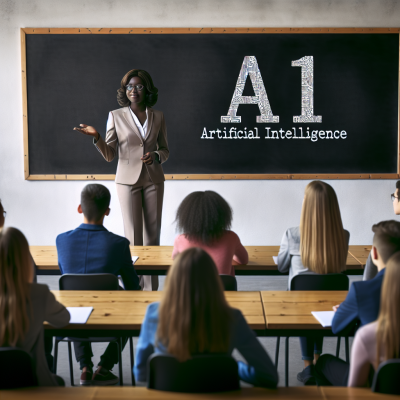
Linda McMahon Sparks Confusion by Referring to Artificial Intelligence as “A1”
In an unexpected twist during a recent education summit in Silicon Valley, U.S. Secretary of Education Linda McMahon drew attention — not necessarily for her policy insights, but for continuously mispronouncing the abbreviation of artificial intelligence. Instead of the widely accepted acronym “AI,” McMahon repeatedly referred to the technology as “A1,” raising both eyebrows and questions in tech and education circles alike.
A Gaffe Heard Around the Tech World
The summit, attended by prominent education professionals and tech industry leaders, was designed to foster discussions about education’s future, particularly the integration of emerging technologies like artificial intelligence in classrooms. However, during her keynote remarks, McMahon, 76 — also well-known for her tenure as a WWE executive — caused a stir with her repeated substitution of “AI” with “A1.”
Example Excerpt from Her Speech:
We need to ensure our schools are preparing students for the jobs of tomorrow — ones that will involve A1 in every aspect of learning and working life.
The audience, initially uncertain whether it was a slip of the tongue or a new initiative, soon realized it was a simple misstatement. Unfortunately, the error was repeated multiple times throughout her address.
From Steak Sauce to Silicon Valley
Social media was quick to pick up on the peculiarity. Many users poked fun at the gaffe, noting that “A1” in the United States is more commonly associated with a popular steak sauce rather than cutting-edge machine learning or robotics.
Common Reactions on Social Media:
- “I think she just tried to put steak sauce in our coding curriculum.” – Twitter User
- “Linda McMahon thinks A1 is going to change education. Now I’m just hungry.” – Reddit Comment
Though humor has softened the public response, some experts expressed worry about the perceived technological illiteracy from such a high-ranking official.
Concerns from the Education and Tech Communities
Despite her business acumen and executive experience, critics argue that McMahon’s misstatement illustrates a broader disconnect between federal education leadership and the rapidly evolving landscape of educational technology.
Key Concerns Include:
- Lack of familiarity with essential terminology could reflect a deeper gap in understanding modern technological trends and their implications for curriculum development.
- Missed opportunity to highlight policy initiatives and investment in AI-driven tools which are already making waves through personalized learning platforms and real-time analytics in classrooms.
Dr. Sasha Nguyen, a professor of education technology at Stanford University, commented: While it’s an honest mistake, it unfortunately underscores how disconnected some policymakers are from the very innovations they are supposed to be championing.
Why “AI” Matters So Much
Artificial Intelligence is not just a tech buzzword — it’s rapidly transforming how educators teach and how students learn. From intelligent tutoring systems to AI-driven grading software and adaptive curricula, AI is becoming the engine that powers future-forward education.
Benefits of AI in Education:
- Personalized learning pathways for students of different skill sets
- Enhanced teacher productivity through automation
- Real-time analytics for student performance monitoring
- Bridging the learning gap for students with disabilities
Mislabeling such a pivotal tool as “A1” diverts attention from its capabilities and showcases the necessity for deeper technological fluency at the highest levels of educational leadership.
Is It Just a Gaffe or a Greater Issue?
While some have dismissed the “A1” incident as a harmless flub, others argue that the situation is emblematic of a leadership culture still playing catch-up in a digital-first world. In an environment where schools are being urged to adopt advanced technologies, leading voices in education must demonstrate not only support but also competence and understanding.
Former teachers, tech entrepreneurs, and even students have weighed in, advocating for more tech-focused training and advisory roles within the U.S. Department of Education.
What Comes Next?
Despite the humorous response to McMahon’s mistake, her office has yet to issue a formal clarification or correction. Whether it was a one-time mix-up or an ongoing misunderstanding of basic technology lingo, it’s clear that taking artificial intelligence seriously requires more than surface-level mentions or misremembered acronyms.
The episode serves as a reminder: as educational policies evolve to incorporate AI, leaders must also evolve to understand it. Otherwise, we risk building future-forward classrooms on outdated knowledge.
Final Thoughts
Future events like this serve as case studies in the importance of digital literacy not just for students and teachers, but also for those making decisions at the highest levels. With AI poised to reshape everything from K–12 learning to higher education and workforce development, getting the name right is just the beginning.
As educators and technologists work hand in hand to define the future of learning, perhaps it’s time for education leadership to take a crash course — not in “A1,” but in what AI truly means.


Leave a Reply